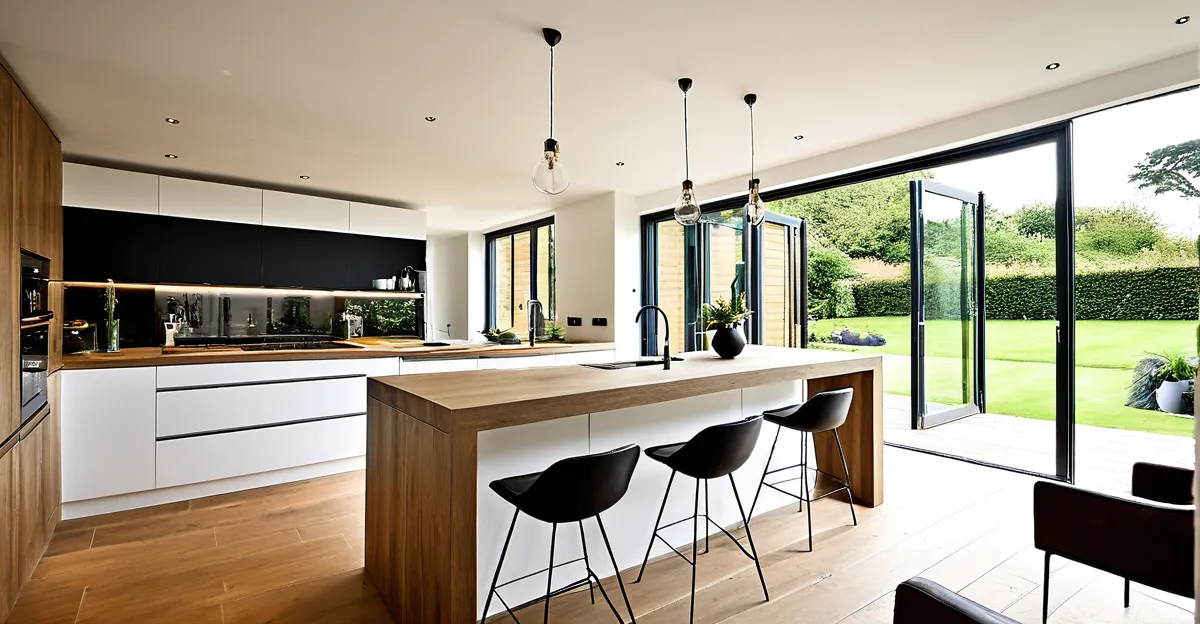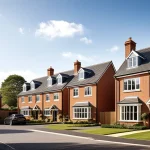Leading factors shaping UK home design trends
Understanding the UK home design trends starts with recognising key influences that guide choices in both architecture and interiors. Cultural and historical contexts play a crucial role; Britain’s rich heritage often inspires design preferences, merging traditional craftsmanship with contemporary aesthetics. This blend shapes homes that reflect both identity and modernity.
Furthermore, the UK’s unique climate and environment heavily impact design planning. The frequent damp and cooler weather necessitates materials and layouts that maximise insulation and natural light. For instance, double glazing and south-facing windows are commonly integrated to enhance comfort and energy efficiency.
This might interest you : How Can Simple Home Decor Transform Your Living Space?
Sustainability has rapidly risen as a decisive trend influence. Increasing awareness of eco-friendly living has pushed homeowners to seek innovative solutions such as energy-efficient systems, sustainable timber, and low-impact construction materials. This shift aligns with broader societal values, demonstrating how environmental concerns are deeply embedded in the evolving UK interior design ethos.
In summary, these factors intertwine to create dynamic, responsive homes that meet both aesthetic desires and practical needs. Embracing historical roots while adapting to climate and sustainability challenges defines the current trajectory of UK home design trends.
Have you seen this : How can you create a seamless indoor-outdoor flow in UK houses?
Technology and innovation in UK home design
Technology in home design is rapidly transforming how UK homeowners approach interiors and architecture. The rise of smart homes UK has introduced automation features that increase convenience, security, and energy efficiency. For example, voice-activated lighting, intelligent heating controls, and connected security cameras allow seamless management of home environments. This technology not only enhances comfort but also supports sustainable living by optimising energy use.
Innovation in interiors goes beyond smart devices. Advanced materials such as self-healing surfaces, energy-efficient insulation panels, and antimicrobial coatings are becoming popular in UK home design trends. These innovations improve durability, hygiene, and environmental performance, aligning with the growing demand for high-quality, sustainable homes.
Moreover, technology influences design planning and spatial organisation. Designers integrate flexible layouts that accommodate smart appliances and wired infrastructures while maintaining aesthetic appeal. As a result, innovation in interiors fosters a balance between functionality and style, adapting to modern lifestyles. The incorporation of these cutting-edge technologies and materials marks a significant trend influence, positioning UK home design at the forefront of contemporary living.
Economic and lifestyle drivers behind design decisions
Economic factors UK strongly shape design planning and choices within UK home design trends. Fluctuations in the property market influence homeowners’ willingness to invest in renovations or new builds. High property values often encourage designs that maximise space efficiency and market appeal, balancing aesthetic preferences with potential resale value.
Urbanisation intensifies demand for compact, multifunctional homes that address the realities of modern city living. In response, UK interior design increasingly incorporates versatile spaces, such as rooms that seamlessly transition between work, relaxation, and socialising. This reflects broader lifestyle trends UK, where remote work and flexible schedules have become prominent.
Changing family structures further impact UK home design trends. Smaller households and multigenerational living arrangements require adaptable layouts, influencing both architectural and interior decisions. For example, partition walls, flexible furniture, and zoned areas enhance privacy while maintaining openness.
In sum, economic drivers and evolving lifestyles work hand-in-hand to direct design choices. Recognising these forces clarifies why UK homes today prioritise functionality without sacrificing style, matching the complex needs of contemporary living.
Popular aesthetics and emerging UK design styles
In today’s UK home design trends, popular aesthetics showcase a vibrant mix of minimalist, maximalist, and hybrid British styles. Minimalism emphasises clean lines, neutral palettes, and uncluttered spaces, appealing to those who value simplicity and calm. In contrast, maximalism embraces bold colours, patterns, and layers, offering rich, personalised interiors that feel dynamic and expressive.
A key trend influence is the hybrid British aesthetic, which creatively combines traditional elements—like classic mouldings or vintage furnishings—with modern, sleek pieces. This fusion respects cultural heritage while embracing contemporary flair, echoing the UK’s wider design philosophy of balancing old and new.
Social media also plays a significant role in shaping designs. Instagrammable interiors encourage homeowners and designers to experiment with statement walls, textured materials, and unique art pieces that photograph well, contributing fresh visuals to the sphere of UK interior design.
Emerging design examples in the UK further reflect these trends through innovative uses of colour and texture to enhance mood and functionality. Integrating these popular aesthetics effectively during design planning allows for homes that are both stylish and deeply personal, meeting diverse lifestyle needs.
Expert insights and practical recommendations
Leading UK-based interior designers and architects frequently highlight the importance of balancing trend influences with timeless functionality. They stress that while embracing UK home design trends such as sustainable materials and smart technology is vital, designs must also cater to long-term usability and comfort.
Experts recommend a thoughtful approach to design planning that integrates evolving lifestyles. For example, flexible spaces that can adapt to work, leisure, and family needs remain a priority. Many professionals suggest using modular furniture and smart storage solutions to maximise space without compromising style.
When it comes to practical application, designers emphasize selecting durable materials that withstand the UK climate’s challenges, ensuring homes are both attractive and resilient. They also advise drawing inspiration from the rich cultural heritage available within the UK, which can enrich interiors with distinctive character.
Looking ahead, the UK design forecast indicates further fusion of technology and sustainability in homes. Practitioners encourage homeowners to invest in innovations that improve energy efficiency and ease of maintenance. Thoughtful incorporation of these elements during early design planning stages creates homes that are aesthetically pleasing and future-proof.








